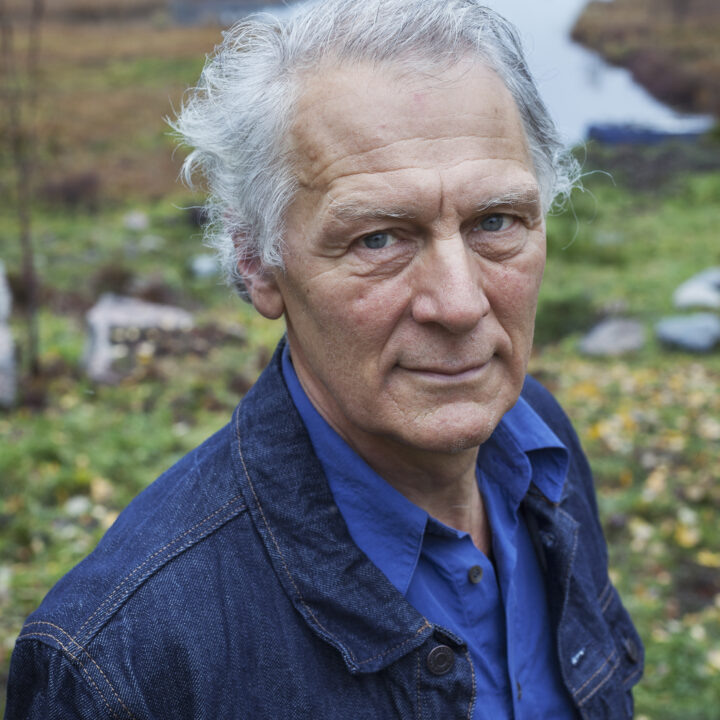Recently, I participated (digitally alas) in a seminar about the future of food and farming in the northern county of Norrbotten in Sweden. Norbotten is a vast county with a small population, 250,000 persons inhabit a land mass the size of Portugal (Maine, South Korea or Malawi). Its economy is dominated by mining, steelworks, forestry, energy (hydro and wind). It is also home of a Sami population with reindeer culture.
The person speaking before me, a renowned scientist, introduced the planetary boundaries and the Eat Lancet global diet “for planetary health” (she was one of the authors of that report). Thus, she made it clear that there are limits and that humanity has already transgressed several of the planetary boundaries (notably re biodiversity and reactive nitrogen and phosphorus). The challenge for humanity is to keep within those planetary boundaries.
You can see the concept of planetary boundaries as a kind of box that defines our operating space. Thinking inside that box forces us to find ways ahead which keeps us inside the box. It is well known that limitations stimulates constructive creativity. There are of course some who refuse to acknowledge that there is any such box, that human creativity can transgress all limits of the planet, bend them to our favor, or simply colonize new planets (Elon Musk, Björn Lomborg and the Breakthrough Institute come to mind). They are certainly also very creative, but not constructive.
There are merits in the concept of planetary boundaries, but I also feel that the scale of that box in most cases is not the right scale. Most people can’t relate to the abstract figures of the global scale. Therefore there are efforts to recalculate the planetary boundaries into individual quotas such as the maximum permissible carbon emission per person, land use per person or a diet based on global resources equally shared. Such calculations can demonstrate the meaning of the planetary boundaries on a personal level.
Still, when people want to develop policy or commandments for individual behavior based on global conditions context is lost and things often go wrong. In addition, it turns the focus to the individual mainly as a consumer, and the identification of people mainly as consumers is part of the problem. The food system is largely driven by the competition between the producers of raw materials, the food industry, retailers and governments rather than by consumers.
Norbotten has only 32,000 hectares of arable land and 2,300 hectares of grassland. That is much less than global average of arable land and it has only 100 square meters of grassland per person compared to some 4,000 square meters which is the global average. In addition, the climate is very harsh. Crops can grow only 3-5 months in the year and even within that narrow window, killing frosts can occur.
Admittedly, it was always hard for the people in Norrbotten to produce their food. The Sami adaptation to the climate and landscape is probably the most sustainable way of producing food. The growing population of people from the South in Norrbotten (to some extent driven by colonial politics) still found ways of farming which, complemented by fishing, hunting and collection of wild edible plants, made it possible to survive. Barley, potatoes, dairy and meat were the staple foods (read more in Swedish). Cattle, goats and sheep were extremely important as grass grew well during the short and light summer and was less susceptible than crops to the vagaries of the weather.
Around the Second World War, the arable land area of Norbotten peaked at 86,000 hectares and grasslands were of approximately the same size. The actual grazing area was much bigger as cattle, sheep and goats also roamed in the forest. The population at that time was more or less the same as today, and most of them were fed from the land, even though some “import” of wheat, sugar and alike did play a role at that time. Globalization undoubtedly has led to that less food is produced in Norrbotten than earlier. One could hardly say that the Norbottnians take a bigger responsibility for feeding the world now than earlier.
Norrbotten has become totally dependent on global supply chains for feeding its population. For the proponents of globalization this is really not a problem. The people of Norrbotten should continue with mining and buy their food from elsewhere. As the reindeer are increasingly disturbed by mining, forestry and wind power they could/should also go, with small herds be kept for the tourists. In the seminar, many people talked about plant based food as well as indoor farming, landless fish-farming, insect rearing and other ecomodernist solutions to real or imaginary problems. That fits well in the prevailing narratives.
In my talk, I encouraged the participants to think inside the box of Norrbotten for food production. What can actually be produced in a good way on their lands?
Their own history and tradition of land use show how it can be done. Instead of continued abandonment of fields and meadows they could revitalize them. In my view we all take more global responsibility by taking care of the land where we live and adjust our consumption to that rather than trying to adjust our consumption to global averages. That is the meaning of the concept landscape diet. In the case of Norrbotten, it doesn’t mean a diet of nuts, vegetables and beans, but a diet close to the traditional, ecologically well adapted. For sure, there is both space and need to include some more greens or other foods, even imported, in that diet. Also in terms of how to organize production and distribution of food there is a need and space for innovation.
There are many arguments in favor of this approach, let me mention just a few. To base the bulk of the food* on the local landscape is essential for the creation of a circular food system, as today’s large scale movements of nutrients across the globe makes nutrient cycling impossible. Consumers are told that they should take responsibility for their consumption, but in global food chains that is simply impossible. Not even the retail chains or food industry manage that, so how could a consumer do it? Instead, by localizing food supply, those who eat can get a much more direct feedback of the impact of their choices. We do our part of a much needed planetary stewardship best by taking care of the part of the planet that we can control. Increasingly, the importance of relationship and meaning of food is recognized, but that is certainly easiest and best realized in local scales.
I am convinced that a localized food supply* and consumption is the only really sustainable way ahead (in addition, external factors will most likely force us that way whether we like it or not). Opponents ask me how the growing numbers of megacities would or could be fed by local food webs. They short answer is; they won’t. This is, however, no argument against local food webs, but an argument against megacities.
* If we today have a situation where 90% of the food is not local or regional, we could aim for the opposite that 90 % should be local or regional. There is certainly no point in pursuing total self-sufficiency or autarchy. I explore this more here.
Teaser photo credit: https://commons.wikimedia.org/wiki/File:Elaborate_wood_box_Tom_Tanaka.JPG







Comments